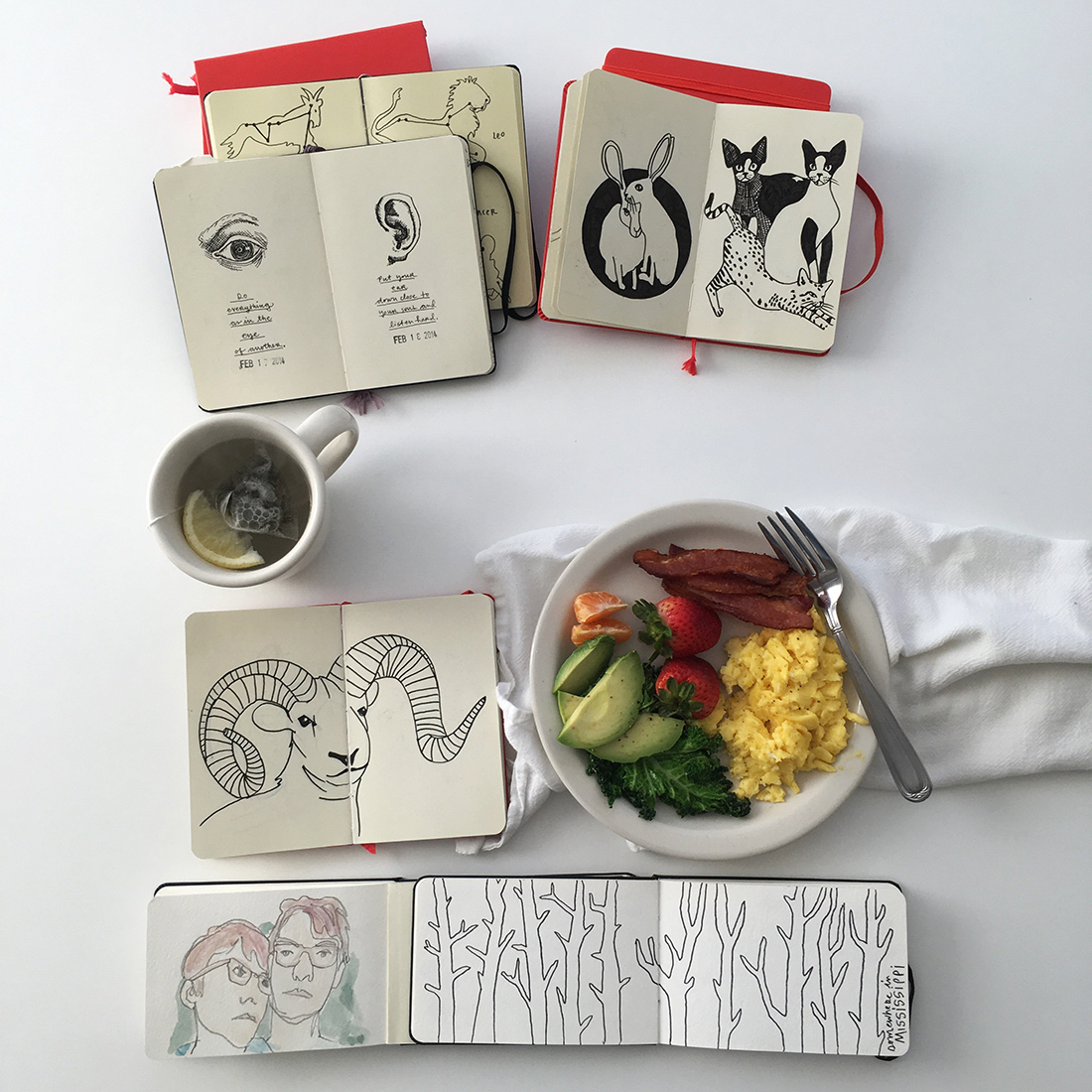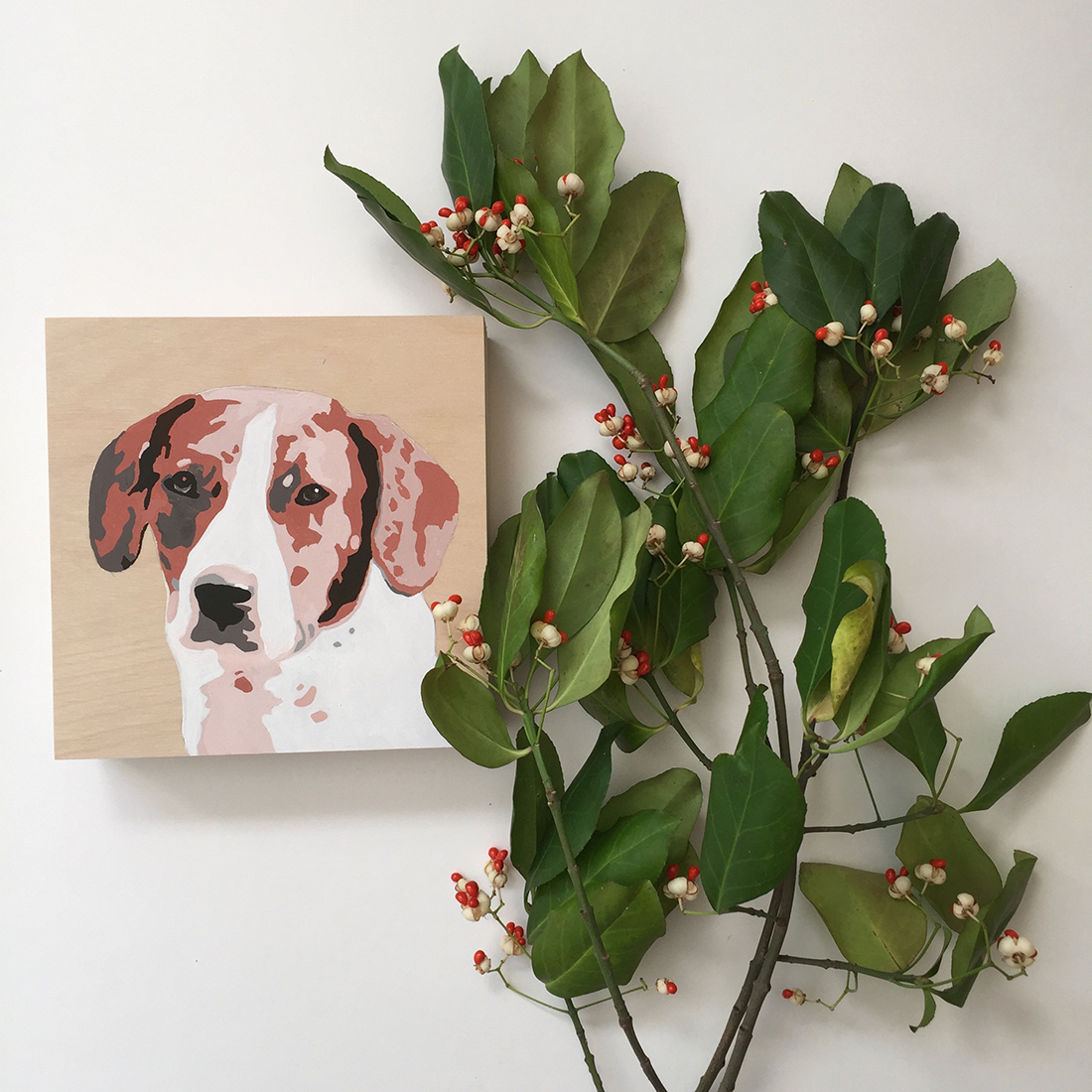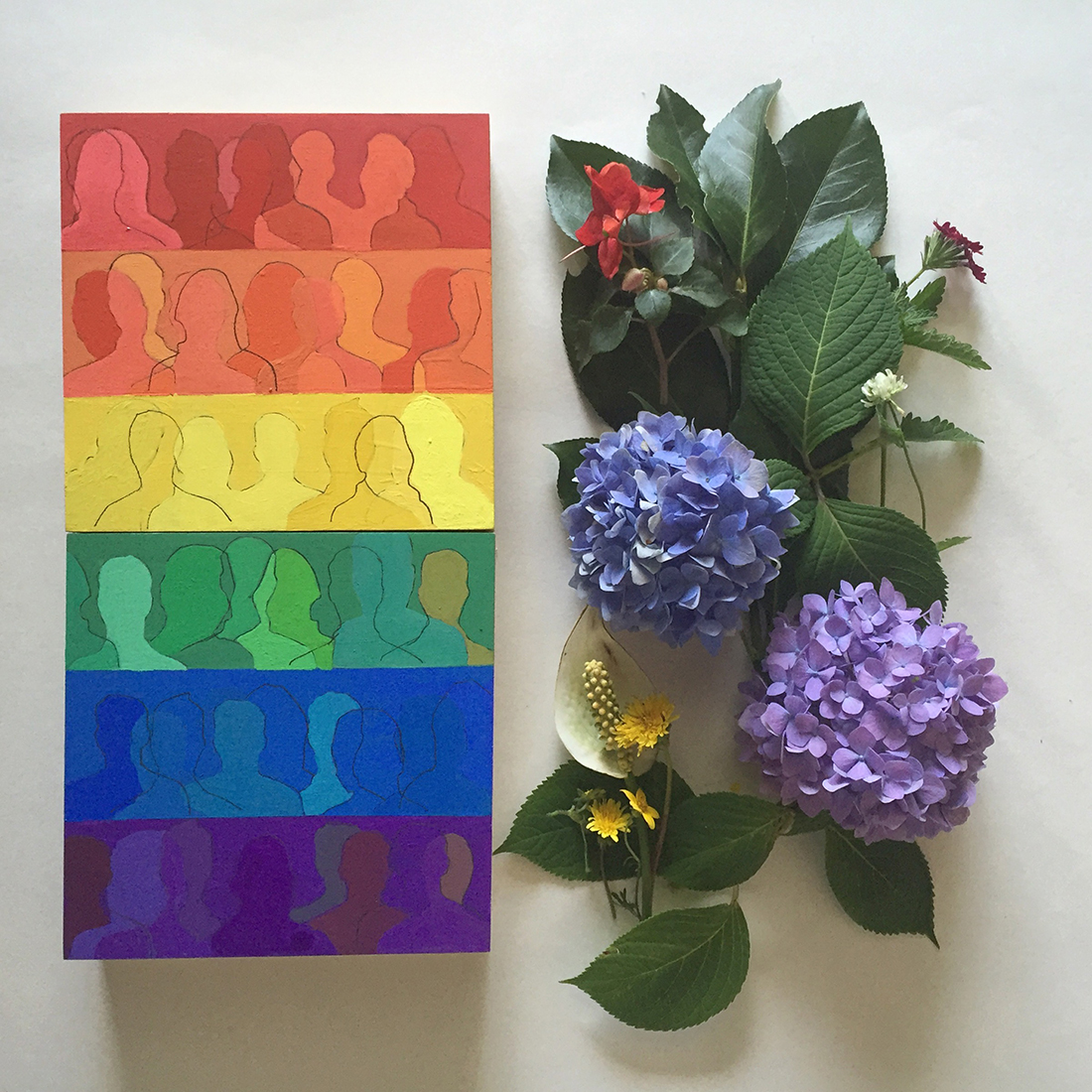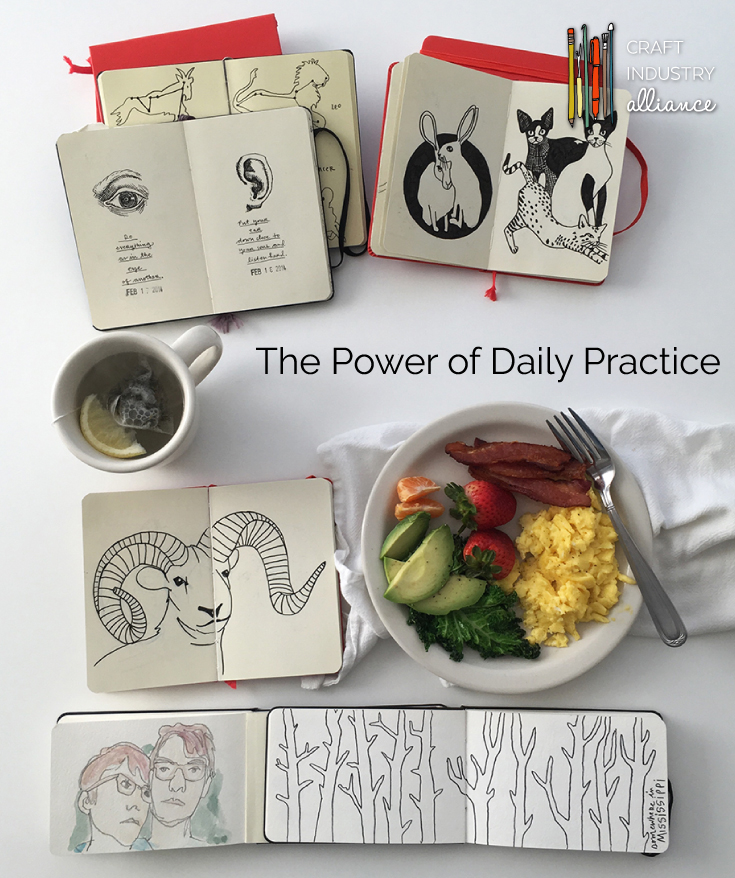
More than four years ago I began a daily challenge—I did a drawing-a-day every single day for one year. When it was over, I didn’t want it to end so I embarked on another challenge. Then two years into it, another one. After four years I can safely say this is a daily practice; a healthy habit that’s changed my life for good.
When I began, I thought a lot about failing. I’d started these types of things before and had not made it very far. So this time I made sure to set myself up for success. Along the way, I did a lot of things right, many of them by accident, but together these tools helped me start and maintain a daily practice.
Get Organized
Before beginning this new practice, I took a few weeks to get organized. I jotted down project ideas and looked for themes within them. I sorted through my materials and bought a few new supplies that I knew I’d need. I thought about when in my busy schedule I had time and how much time I could give it. I thought about why I had failed before and I worked to eliminate any future excuses I might try to give myself.
Pick a Time
While preparing, I began studying how to build habits and how they are maintained for the long term. I learned that it’s important to have a trigger, an event that already happens every day and can signal it’s time for the new habit. I knew that I wanted to create first thing in the morning, so I chose making coffee as my trigger. After I put on the pot of coffee, I sat down to work.
Track Your Progress
I also learned that what gets tracked gets done. I used a calendar as my tracker and marked an X for each day. The X’s started to make a chain and then the goal was to not break the chain. Over the years, with other daily challenges, I’ve tried tracking apps and even Instagram. I particularly like taking a photo each day because it shows my progress and growth over time. No matter the method, tracking allows me to easily see if I miss a day.
Pick a Theme
One of the hardest things about daily practice was sitting down each day and not knowing what to do. I found that it helps to have a theme or a series, something specific but also flexible. It needs to be specific enough that it’s easy to get started each day, yet flexible enough that it’s open to interpretation and can change over time. Constraints make us more creative, but I don’t want to feel stuck. I like to look for a happy medium in there.
I discovered that with time, quantity leads to quality. I found that when I try to make something ‘good,’ it doesn’t turn out. Instead I focused on a quantity. If I do one pocket-sized drawing or just 20 minutes of painting each day (quantities) it will add up. They won’t all be great, but some will be good. Daily practice means taking baby steps. I looked for small wins and trusted that they would lead to something bigger.



Have a Plan
It’s important to have a plan in place for missing a day, or two or ten. The first year my number one goal was to not miss a single day, and I didn’t. But I knew as my practice got longer and more complex that I was likely to miss a day here and there. One year I gave myself five cheat days like a diet. Another year, I simply made up the missed quantity the next day. Whatever the system, the important thing is to stick to the plan and not let a few slip-ups get you entirely off track.
Share Your Work
Sharing a daily practice on social media is a great way to hold yourself accountable and get feedback on your work. For me, Instagram is a terrific platform for this. I feel a sense of responsibility to my followers and I use that to my advantage. Besides, it’s important to show your work. Quality work and beautiful things don’t just happen. A lot of time, energy, thought, and skill goes into them. Let followers and customers see all that work. Showing it can, over time, help you build your business, too!
I’ve also found that the practice of writing a caption or a blog post to go with a photo means I am forced to reflect on my work. This is huge! I write about the ups and downs and what’s working and not working. This process has made me better able to recognize when I’m blocked or bored and when it’s time to fill the well or feed my creative fire. I’ve learned to admit when it’s best to just finish something and move on. Writing all these thoughts down helps flush out my mind and make room for more creativity.
As a creative, it’s easy to fill my day with clerical work or social media and not actually get messy or make something. A daily practice creates momentum for me. It’s about a movement toward something: better technique, exploring new subjects and themes, and finding more meaning in my work. A daily practice is about process and progress. Creativity begets creativity; projects beget more projects.
Get Started!
You certainly don’t need to wait until the start of a new year. Start your preparations now and set a date to begin. Like Vincent Van Gogh said, “Great things are done by a series of small things brought together.”

Crystal Moody
contributor



































This article is quite inspiring to me. Thanks Crystal! I think I may try something similar, but I’m not that great of an artist. Your pictures are wonderful, but I may have to try very, very simple pictures and then write just a sentence or two. We’re heading out for a long summer of traveling so this might be a great way to record our journey and start a new creative practice! Claudia Lash
I so agree with this! Two years ago, I began a weekly habit of posting quilt designs on my blog and Instagram (@geometriquilt). I totally agree that ‘quantity leads to quality’. I don’t sit down expecting to come up with a perfect design every time, but I know that the more I sit down to sketch, the more likely I’ll end up with something I’m happy with. The whole experience has benefitted me in so many ways.
A wonderful article! I’ve done two 100 Day projects that have led me to a near-daily creative practice. It has made a big difference in my approach to my work.
Very inspiring. I will use some of your methods for keeping the creative going!
Thank you for these wonderful tips! This idea has intrigued me for some time, so your article may just be the prompt to help me get started on a daily art practice!